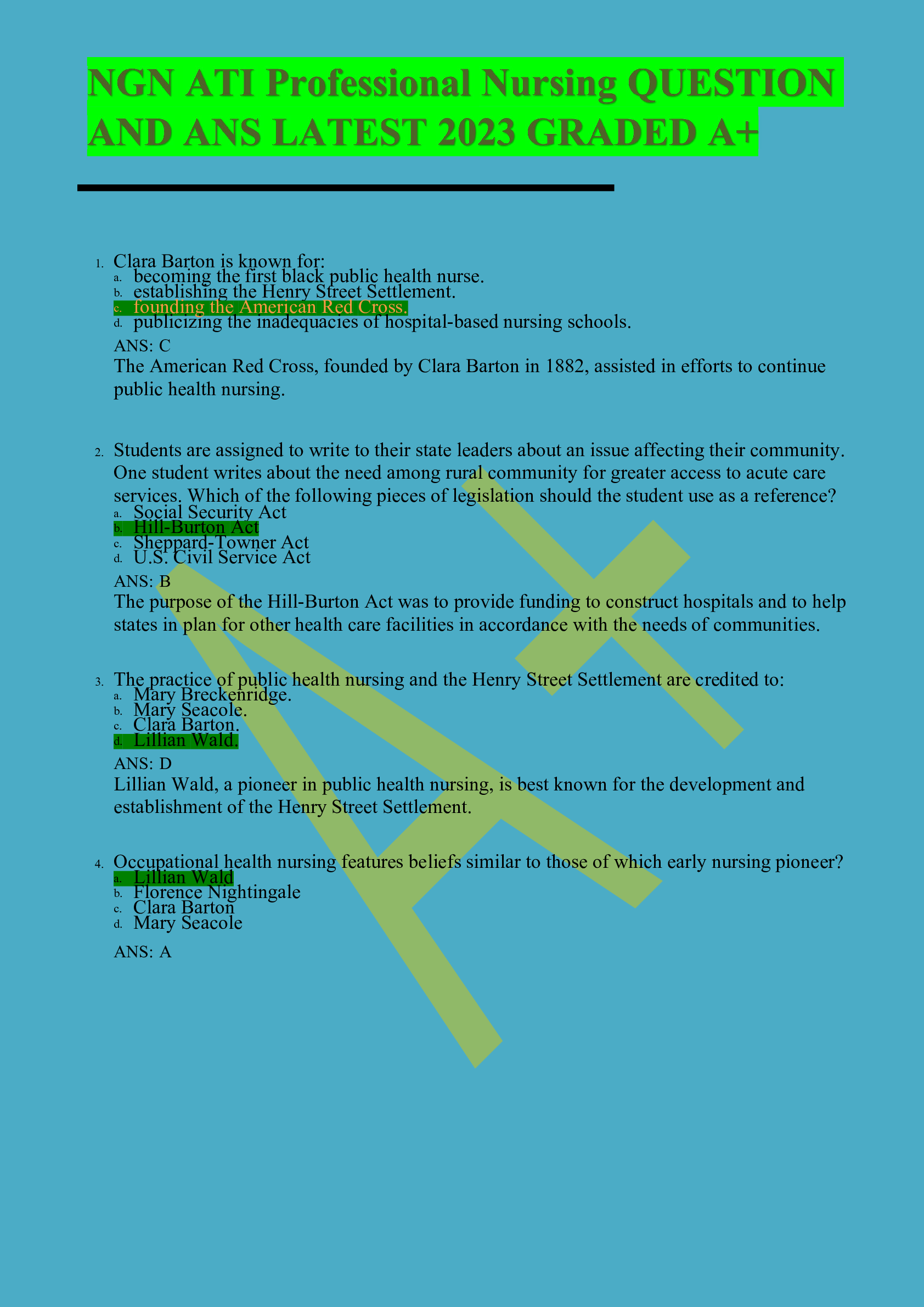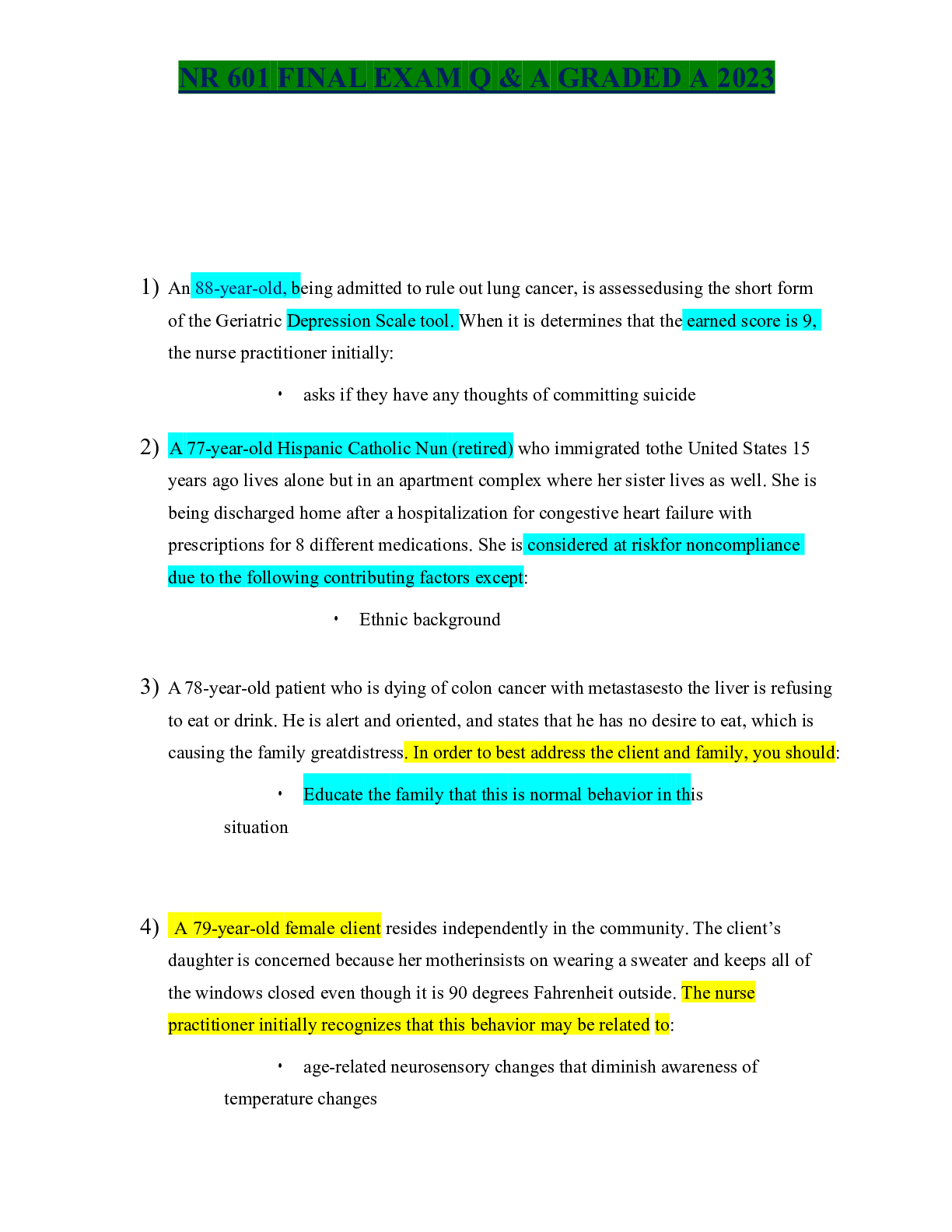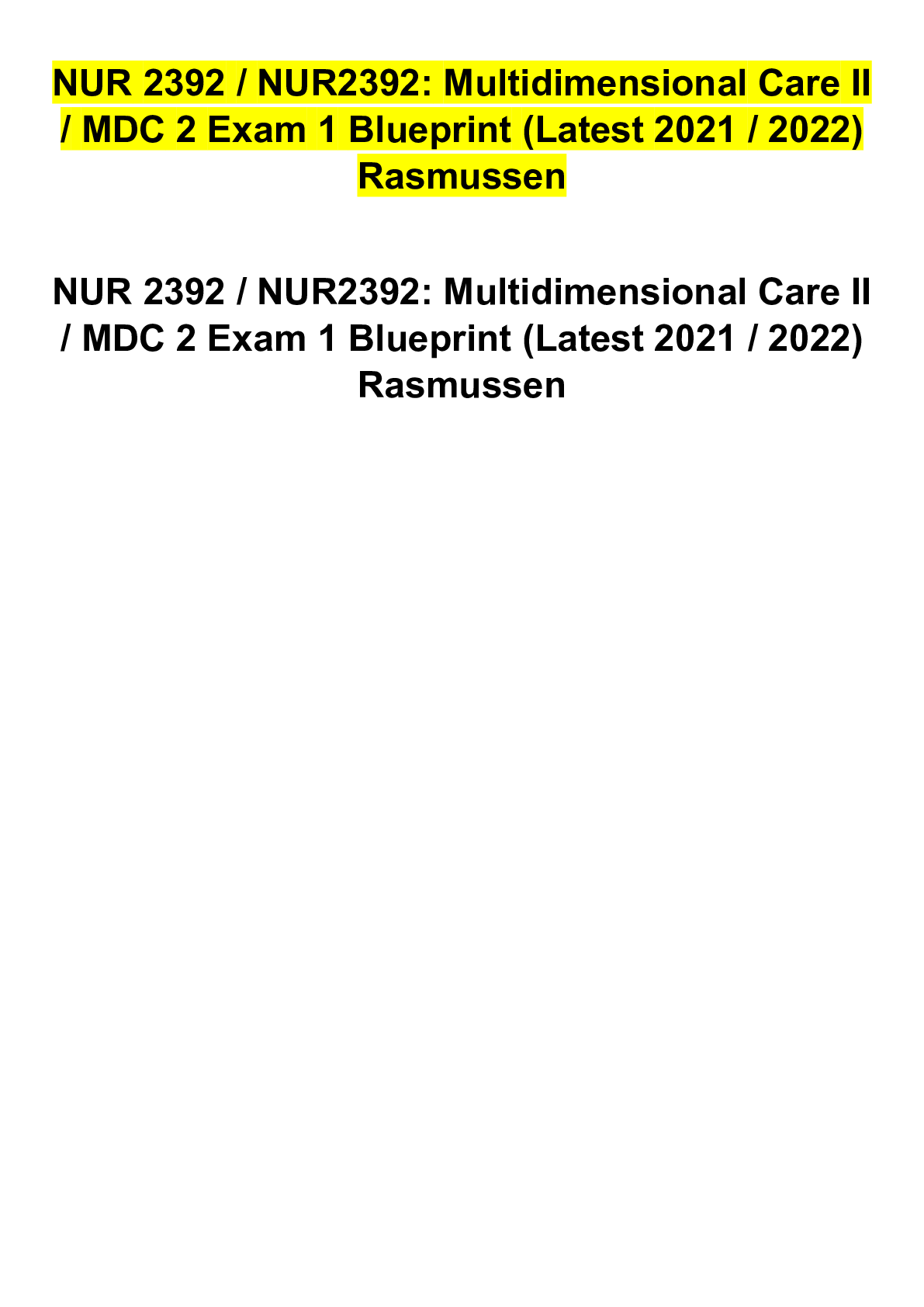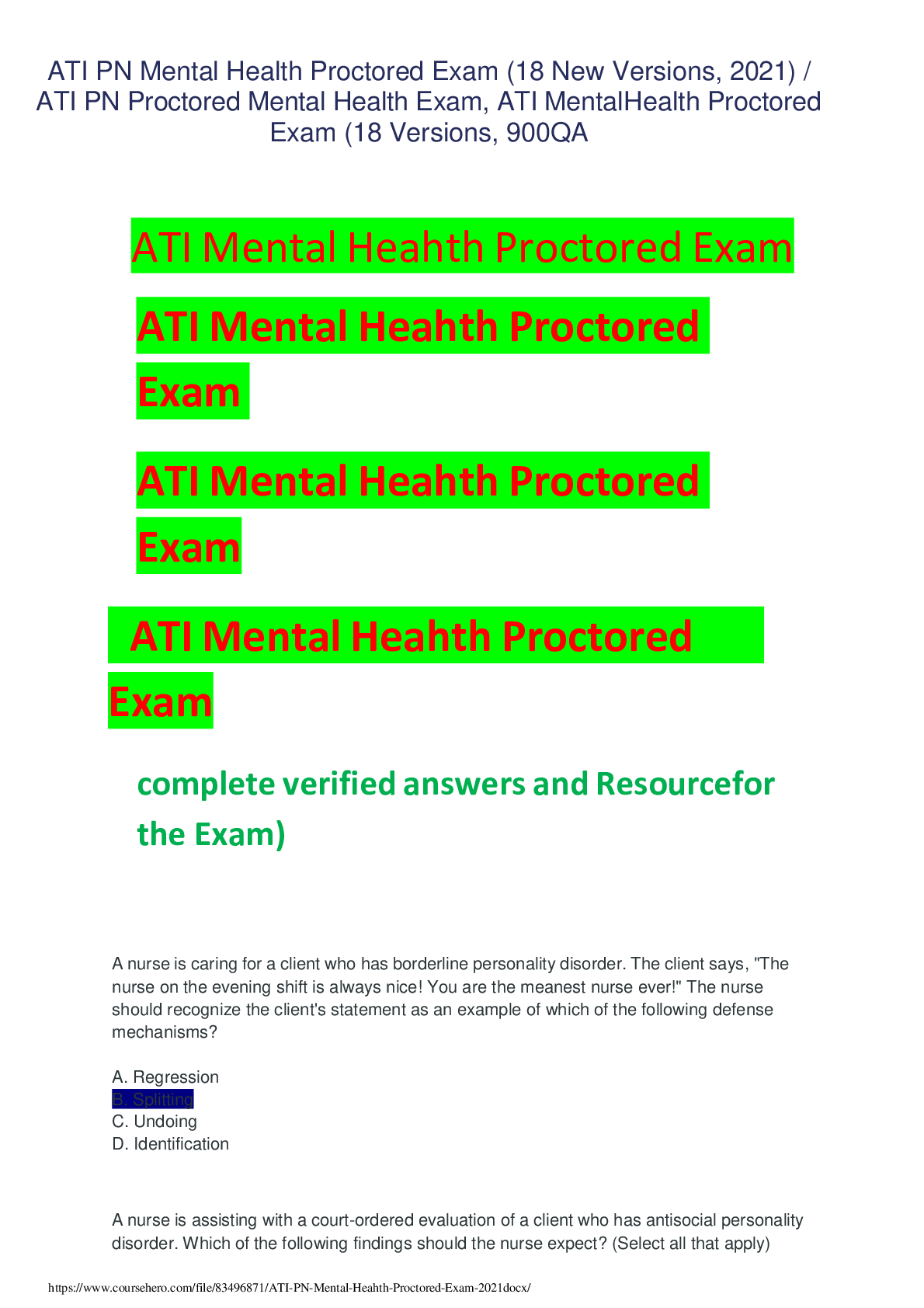Applied Psychology > AHIP > 2023 AHIP EXAM 4 Eaton, Marketing 300, ASU (All)
2023 AHIP EXAM 4 Eaton, Marketing 300, ASU
Document Content and Description Below
2023 AHIP EXAM 4 Eaton, Marketing 300, ASU Internal Factors that Affect Pricing Decisions - ANS 1. Marketing Objectives 2. Marketing Mix Strategy 3. Costs Marketing Objectives - ANS -maximi... ze profit -gain market share -infer a level of quality -survive Marketing Mix Strategy - ANS price needs to be consistent with other 3P's (needs to reflect advertising, etc.) Costs - ANS your costs affect your profit, so set the optimal price External Factors that Affect Pricing Decisions - ANS 1. Demand for your product 2. Competition -competitors price -strength of competition 3. Economy - Cost of components (natural resources) - Economic conditions Price Elasticity - ANS How much demand for a product will change with a change in price e=(% change in quantity demanded of Good 'A') / (% change in price of Good 'A') Elastic - ANS consumers buy more or less of a product when the price changes Inelastic - ANS increase or decrease in price does not affect demand unitary elasticity - ANS An increase in sales exactly offsets a decrease in prices, and revenue is unchanged Stages for Establishing Prices - ANS 1. Develop pricing objectives 2. Assess target market's evaluation of price 3. Evaluate competitors' prices 4. Select a basis for pricing 5. Select a pricing strategy 6. Determine a specific price 1. Develop pricing objectives - ANS Profit- Identify price and cost levels that allow the firm to maximize profit per product Status Quo- Identify price levels similar to competitor average price Market Share- Adjust price levels so that the firm can maintain or increase sales relative to competitors' sales 2. assessing the target market's evaluation of price: importance of price - ANS -Type of Product -Type of Target Market -Purchase Situation 3. evaluating competitors' prices - ANS Sources of Competitors' Pricing Information -Comparative shoppers Importance of Knowing Competitors'Prices -Helps determine how important price will be to customers -Helps marketers in setting competitive prices for their products Customer View of Pricing and Marketing -Pricing above competition -Pricing below competition 4. selecting a basis for pricing - ANS Cost-plus pricing: adding a specified dollar amount to the seller's costs -Markup: Adding to the price of the product a predetermined percentage of the variable cost -Margin: Adding to the price of the product a predetermined percentage of the total price cost-based pricing: break-even pricing - ANS the break-even point is where a com Internal Factors that Affect Pricing Decisions - ANS 1. Marketing Objectives 2. Marketing Mix Strategy 3. Costs Marketing Objectives - ANS -maximize profit -gain market share -infer a level of quality -survive Marketing Mix Strategy - ANS price needs to be consistent with other 3P's (needs to reflect advertising, etc.) Costs - ANS your costs affect your profit, so set the optimal price External Factors that Affect Pricing Decisions - ANS 1. Demand for your product 2. Competition -competitors price -strength of competition 3. Economy - Cost of components (natural resources) - Economic conditions Price Elasticity - ANS How much demand for a product will change with a change in price e=(% change in quantity demanded of Good 'A') / (% change in price of Good 'A') Elastic - ANS consumers buy more or less of a product when the price changes Inelastic - ANS increase or decrease in price does not affect demand unitary elasticity - ANS An increase in sales exactly offsets a decrease in prices, and revenue is unchanged Stages for Establishing Prices - ANS 1. Develop pricing objectives 2. Assess target market's evaluation of price 3. Evaluate competitors' prices 4. Select a basis for pricing 5. Select a pricing strategy 6. Determine a specific price 1. Develop pricing objectives - ANS Profit- Identify price and cost levels that allow the firm to maximize profit per product Status Quo- Identify price levels similar to competitor average price Market Share- Adjust price levels so that the firm can maintain or increase sales relative to competitors' sales 2. assessing the target market's evaluation of price: importance of price - ANS -Type of Product -Type of Target Market -Purchase Situation 3. evaluating competitors' prices - ANS Sources of Competitors' Pricing Information -Comparative shoppers Importance of Knowing Competitors'Prices -Helps determine how important price will be to customers -Helps marketers in setting competitive prices for their products Customer View of Pricing and Marketing -Pricing above competition -Pricing below competition 4. selecting a basis for pricing - ANS Cost-plus pricing: adding a specified dollar amount to the seller's costs -Markup: Adding to the price of the product a predetermined percentage of the variable cost -Margin: Adding to the price of the product a predetermined percentage of the total price cost-based pricing: break-even pricing - ANS the break-even point is where a com [Show More]
Last updated: 2 years ago
Preview 1 out of 13 pages
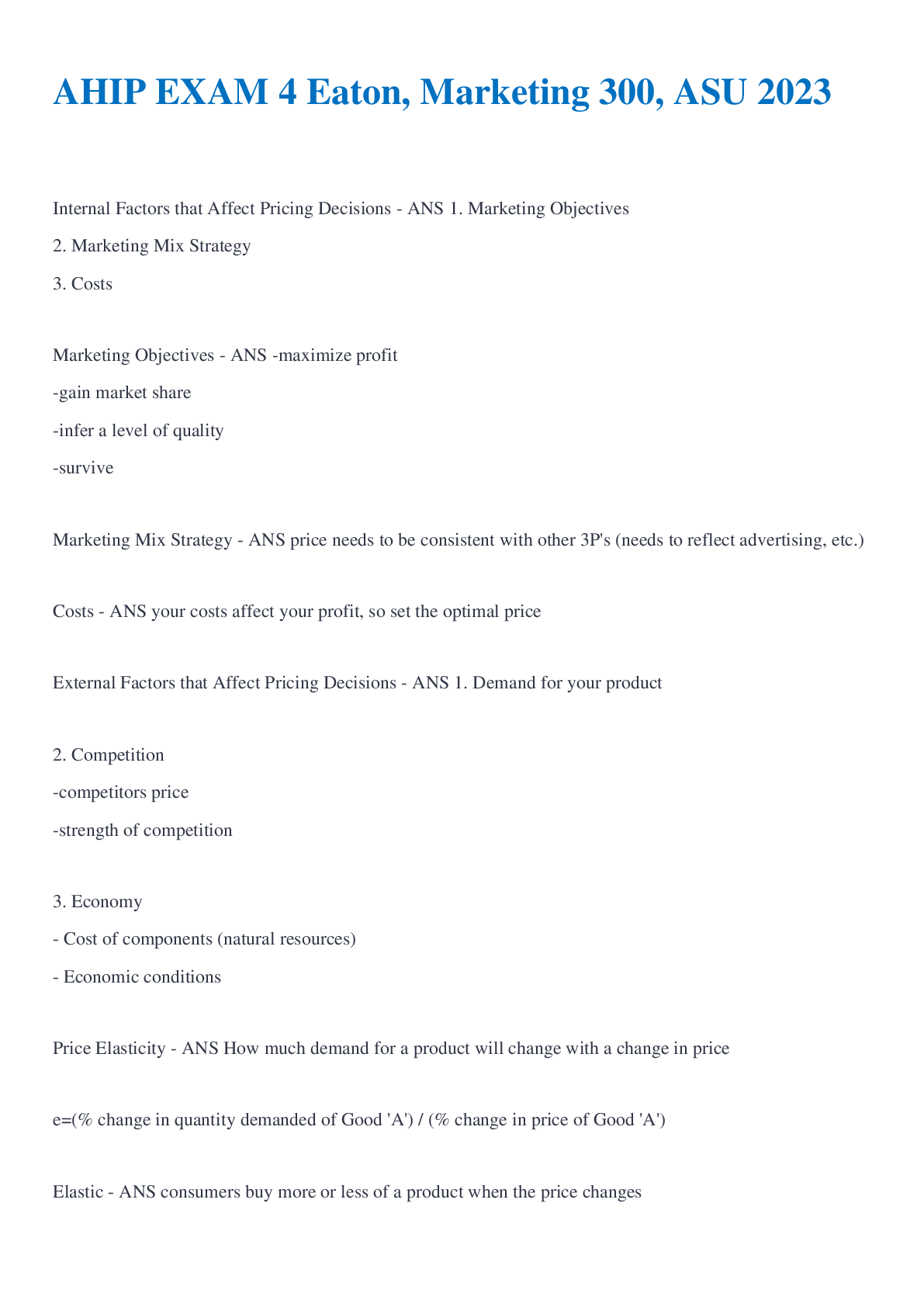
Buy this document to get the full access instantly
Instant Download Access after purchase
Buy NowInstant download
We Accept:

Reviews( 0 )
$15.00
Can't find what you want? Try our AI powered Search
Document information
Connected school, study & course
About the document
Uploaded On
Dec 17, 2022
Number of pages
13
Written in
Additional information
This document has been written for:
Uploaded
Dec 17, 2022
Downloads
0
Views
70

